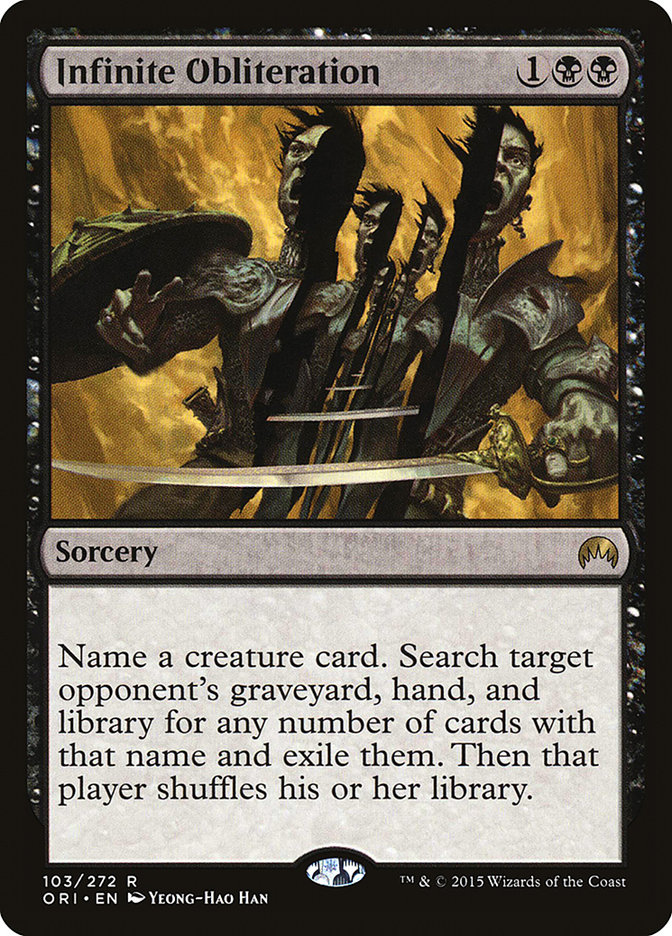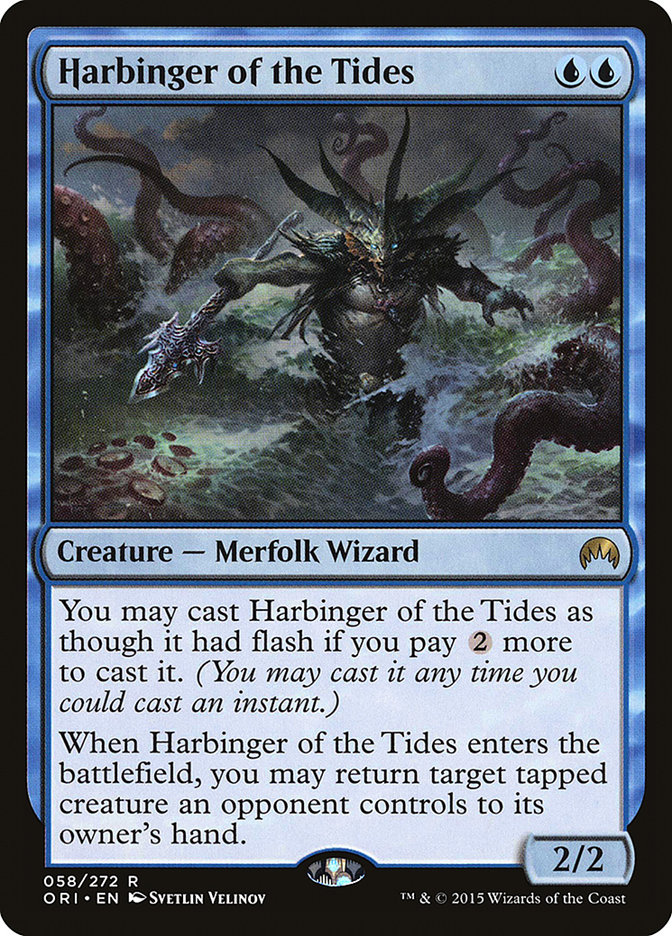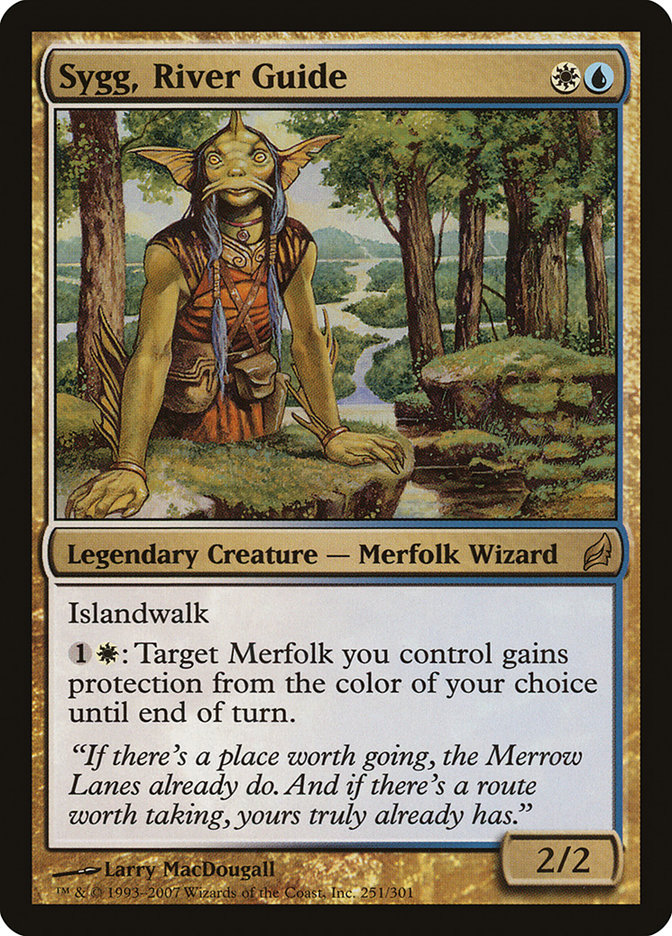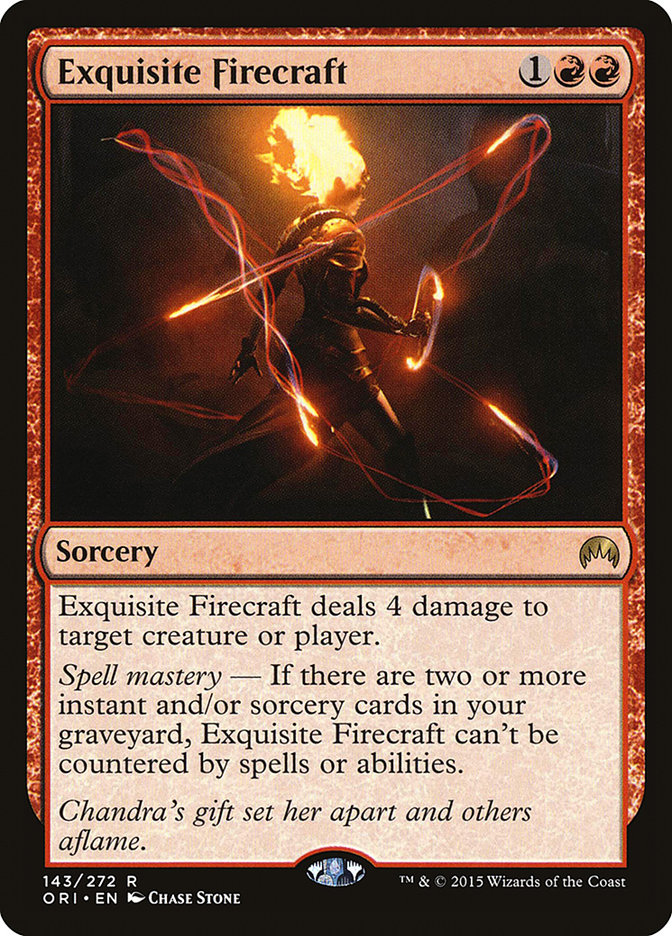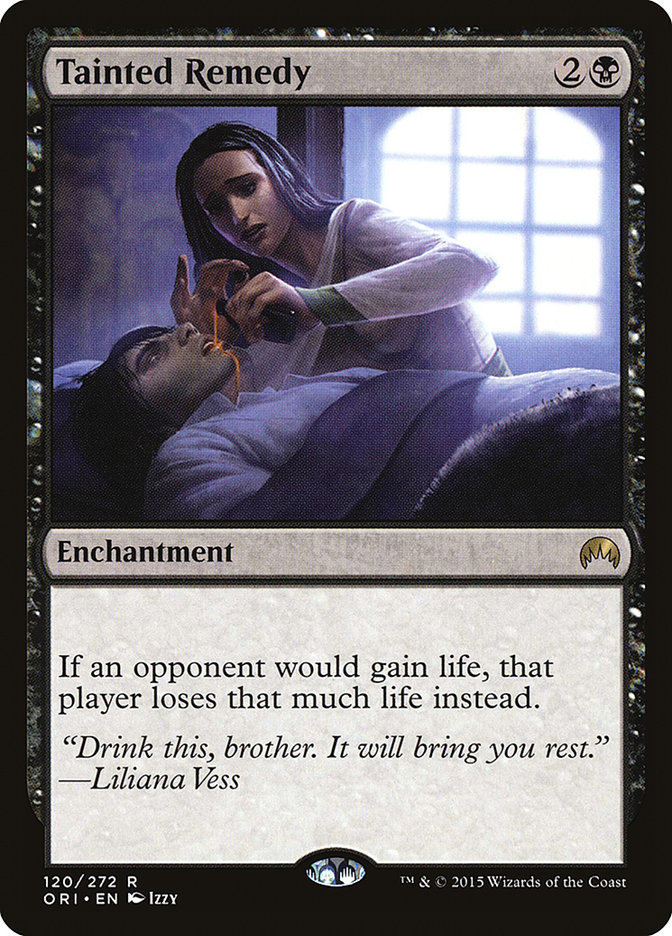Leading into Grand Prix Charlotte,I wasn’t at all sure what to play, and I ended up going with a brew I’d been spending quite a bit of time on: Esper Dragons. Now, before you think, “well, that’s boring,” you also need to realize that Charlotte was Modern, so Esper Dragons wasn’t exactly a deck that was in the conversation.
Dragons of Tarkir was new to the mix, and I was working on the idea that Dragonlord Ojutai wasn’t going to just be a powerhouse in Standard, but that OJ also had a home in Modern. I wrote about the deck last month, saying:
Here was that deck, as I played it in the Grand Prix:
Creatures (8)
Lands (25)
Spells (27)

As is always the case when new sets come out, I’m always looking to update a deck, hoping that something good was put out there that might just change things. Every new set is a fresh opportunity to make a deck hop up to the next level or further the stranglehold it might have on either the metagame or portions of the metagame.
While nothing from Magic Origins was a clear card to simply just pop into the deck, there were some important things that did pop out as possibilities to just think about for the deck. Nothing made sense for the maindeck, but there were a few cards that popped into mind for the sideboard. Take, for example, this one:
There is a shockingly large number of combo decks in Modern that are not at all happy to see this card. Hell, even if they aren’t true combo decks, there are lots of decks that get greatly hampered by this card. Normally a card like Cranial Extraction or Memoricide are solid anti-combo plans, but they struggle to get to the party in time because they are so expensive. At only three mana, this is a card that can perhaps make it in time to do something.
A deck like Amulet Bloom, for example, absolutely can win with its backup plan of Hive Mind, but it is a much more difficult feat to accomplish than Primeval Titan leading the way. Similarly, Twin decks are more likely to try to end the game with Deceiver Exarch, and an Infinite Obliteration can knock out the “better” creature, leaving the opponent with only their few copies of the more fragile Pestermite to pull their combo off. Even Tron, for some decks, can be frustrated by removing either their Wurmcoil Engine or their Emrakul, the Aeons Torn.
Now, of course, one of the problems with a card like Infinite Obliteration is that unless you’ve cleared the way with other discard and know the card you want to hit is actually in their hand, you might make the opponent’s deck less powerful overall but you are going to be down a card in order to do so. In addition, a lot of decks only really have a small number of targets that matter, so this isn’t a card you run a ton of in a sideboard of something like my Esper Dragons deck or any Rock or Abzan deck unless you are so weak to something that you don’t mind drawing a dead Infinite Obliteration later.
Even as a minor element of a deck’s sideboard plan, though, it does seem like a really powerful addition to a lot of decks, and it is especially potent in Modern. Strangely, it just so happens that a large portion of the unfair decks in Modern happen to go about their unfair plan with creatures. Especially when two of the most talked-about decks that dodged the ban-hammer rely on a creature – Primeval Titan and Griselbrand, respectively – the idea of exiling all of the copies of that creature from their deck starts to look pretty great.
In some ways, as I looked to update Esper Dragons, it was this realization about how the sideboard might be affected by Infinite Obliteration that made me immediately think about just how powerful another Magic Origins card was going to be.
Suddenly, I found myself recognizing just how much of a leg up Merfolk had gotten from Magic Origins.
In realizing just how great Infinite Obliteration was, the idea that an anti-creature card could significantly matter was hammered home all the more. Merfolk, generally, is a deck of “Lords,” and it takes a very special non-Lord Merfolk to make the cut. Take, for example, Toshihiro Yamada’s Top 32 deck from Grand Prix Singapore:
Creatures (24)
- 4 Lord of Atlantis
- 4 Merrow Reejerey
- 4 Silvergill Adept
- 4 Cursecatcher
- 4 Master of the Pearl Trident
- 2 Tidebinder Mage
- 2 Master of Waves
Lands (20)
Spells (16)
Sideboard

It has four Cursecatchers, four Silvergill Adepts, and two Tidebinder Mages as its non-Lord creatures. One might call Master of Waves a non-Lord, but given that it is making a small army, adding to the power on the table significantly, I think we’re going to have to agree to disagree on that one.
If we were to put Harbinger of the Tides into Merfolk, it isn’t completely without limitations. The creature it is bouncing needs to belong to the opponent and be tapped. This means that Primeval Titan is still going to be a problem if Harbinger of the Tides is all you have because of Slayers’ Stronghold. Then again, Slayers’ Stronghold was already a problem as it was, so those Ghost Quarters that Yamada was running look all the more appealing.
Importantly, though, Harbinger gets to be another line of defense against all manner of decks. Consider, for example, this build of Merfolk:
Creatures (24)
- 4 Lord of Atlantis
- 4 Merrow Reejerey
- 4 Silvergill Adept
- 1 Phantasmal Image
- 4 Master of the Pearl Trident
- 3 Master of Waves
- 4 Harbinger of the Tides
Lands (20)
Spells (16)

The deck doesn’t have one of the big sacred cows for Merfolk, Cursecatcher, but it also just simply feels like it has many more weapons it is bringing to the fight against creature-based decks, especially since it has four cards that can dodge Dispel and Spell Pierce (or, via Aether Vial, dodge all instant contingencies altogether).
In addition, there are a ton of ‘fair’ decks out there that are planning on attacking with creatures, but they don’t much take a liking to being messed with. Returning a Delver of Secrets, a Gurmag Angler, or a Scavenging Ooze can set an opponent back much further than just the amount of mana they spent on it.
Of course, playing with Harbinger of Tides also makes me want to tie some things together with another color entirely – white.
You’re missing out if you’ve never played with this little number:
Check out this brew, based slightly on some experiences I had with Merfolk from a long time ago; I qualified for US Nationals with a Sygg Merfolk deck, and got second in two PTQs (with more Top Eights) with another.
Creatures (23)
- 4 Lord of Atlantis
- 4 Silvergill Adept
- 3 Sygg, River Guide
- 2 Phantasmal Image
- 4 Master of the Pearl Trident
- 2 Master of Waves
- 4 Harbinger of the Tides
Lands (21)
Spells (16)

Let’s upgrade those copies of Vapor Snag into Path to Exile!
I don’t actually know if Ojutai’s Command is good enough to make the trek to Modern, but it certainly seems exciting to resuscitate a dead Lord of Atlantis while countering a key creature or even gaining life to “counter” a burn spell. Four mana is a lot of mana, of course, but I think it could well be worth it given that, again, Modern seems to be a very creature-centric format right now and your own Merfolk seem to have a pretty terrible habit of dying.
It could well be the case that keeping it simple and mono-blue is the way that this deck should be built, but I still have a lot of fond memories of fighting against Jund with Sygg, River Guide and I’m not one to mind living in the past. Being a little hateful to creatures seems like a great path to be on right now, and Harbinger of the Tides and Path to Exile really help with that. You could go a little more conservatively, like Christoffer Larsen from the Top Eight of GP Copenhagen, and run only Path to Exile in the maindeck… but I personally just love having access to Sygg, River Guide.
Of course, I couldn’t help myself in looking at Burn. Exquisite Firecraft is certainly expensive, but it feels like it could be something that just ends it all for decks that might otherwise be dropping to a low life total with the plan to stop those last few points with timely countermagic.
Burn is an incredibly tight list, and while there is a little bit of room to play with it, making any changes can be a difficult proposition. Take, for example, the prospect of fitting in Chandra, Fire of Kaladesh into the list as well; now you’re talking about a number of three-mana spells. It’s not that it hasn’t been done before – hello, Flames of the Blood Hand – but there are very real costs.
Here is one attempt to fit in both:
Creatures (15)
- 1 Grim Lavamancer
- 4 Goblin Guide
- 4 Vexing Devil
- 4 Eidolon of the Great Revel
- 2 Chandra, Fire of Kaladesh
Lands (19)
Spells (26)

I had also briefly toyed with making the deck touch black instead of green to include this sideboard card:
In some ways, Tainted Remedy feels like a completely awesome plan against so many opponents who are going to be banking on lifegain to squeak past this matchup. In other ways, though, it just feels like an expensive Rain of Gore. While technically a more powerful enchantment while in play, it does feel as though it might be asking too much of Tainted Remedy to expect it to be effective even after taking time off from damaging the opponent.
I’m still tinkering with various makeups of Burn. Currently, I’m trying out Vexing Devil again, returning to the past at least in part because I’ve been underwhelmed by Monastery Swiftspear. This could just be a few bad experiences, but so far I’m liking the change quite a bit.
Chandra, Fire of Kaladesh and Exquisite Firecraft aren’t cards that I’m 100% confident will end up in the final build of my Burn deck, but they are showing early promise. For Chandra to be worth the energy, she really needs to do four damage for that kind of mana. She’s definitely died a few times before doing any damage, but on the other hand she’s also done seven more than a few times.
All told, I’m very excited to see what happens in the Modern 5K Premier on Sunday in Richmond. The focus of the weekend is certainly going to be the Standard Open, but I’m going to keep my eyes peeled for some little fishies and some flame.
Good luck everyone playing in Richmond. As for me, I’m wrapping up my testing for Pro Tour Magic Origins. I head to Vancouver in a few days, and next weekend, this time, I’ll be trying out my first Pro Tour playing “right side up.” Wish me luck!

